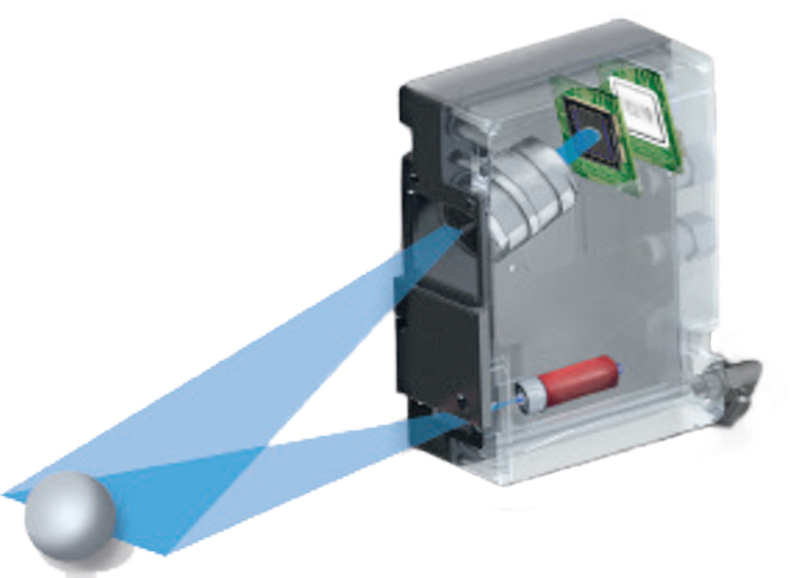Do you know the working principle of laser displacement sensors?
Laser displacement sensor is a type of sensor that uses laser for high-precision displacement (distance) measurement. Compared with traditional measurement methods, laser displacement sensors have been widely used in industry due to their advantages of high accuracy, non-contact, and fast measurement.
Laser displacement sensors can accurately measure the position, displacement, and other information of the measured object, with an accuracy of micrometers or even nanometers. They are mainly used to measure geometric quantities such as displacement, thickness, vibration, distance, and diameter of objects.
The working principle of laser displacement sensor
The laser emitter shoots the laser at the surface of the measured object through the lens, and the laser reflected by the object passes through the receiver lens and is received by the internal imaging element. The projection positions of light spots at different distances on the imaging element are different. Based on the imaging position and optical projection relationship, the distance of the measured object can be obtained. The imaging element has extremely high position resolution ability, which can achieve extremely high measurement accuracy.
JIOPTICS laser rangefinder module has the advantages of high quality, great performance, small size, low power consumption, etc. Its professional knowledge and cutting-edge technology provide you with solutions for different measuring distances from 1km-300km.
In the past 10 years, we have provided reliable range finder solutions for different types of companies, which are widely used in the integration of unmanned aerial vehicles, artillery, aircraft, ships, thermal imaging and other systems. Strong scientific research capabilities provide OEM/ODM customization services for you. If you need customization, we will be your reliable partner.
Laser displacement sensors can accurately measure the position, displacement, and other information of the measured object, with an accuracy of micrometers or even nanometers. They are mainly used to measure geometric quantities such as displacement, thickness, vibration, distance, and diameter of objects.

The working principle of laser displacement sensor
The laser emitter shoots the laser at the surface of the measured object through the lens, and the laser reflected by the object passes through the receiver lens and is received by the internal imaging element. The projection positions of light spots at different distances on the imaging element are different. Based on the imaging position and optical projection relationship, the distance of the measured object can be obtained. The imaging element has extremely high position resolution ability, which can achieve extremely high measurement accuracy.
JIOPTICS laser rangefinder module has the advantages of high quality, great performance, small size, low power consumption, etc. Its professional knowledge and cutting-edge technology provide you with solutions for different measuring distances from 1km-300km.
In the past 10 years, we have provided reliable range finder solutions for different types of companies, which are widely used in the integration of unmanned aerial vehicles, artillery, aircraft, ships, thermal imaging and other systems. Strong scientific research capabilities provide OEM/ODM customization services for you. If you need customization, we will be your reliable partner.



